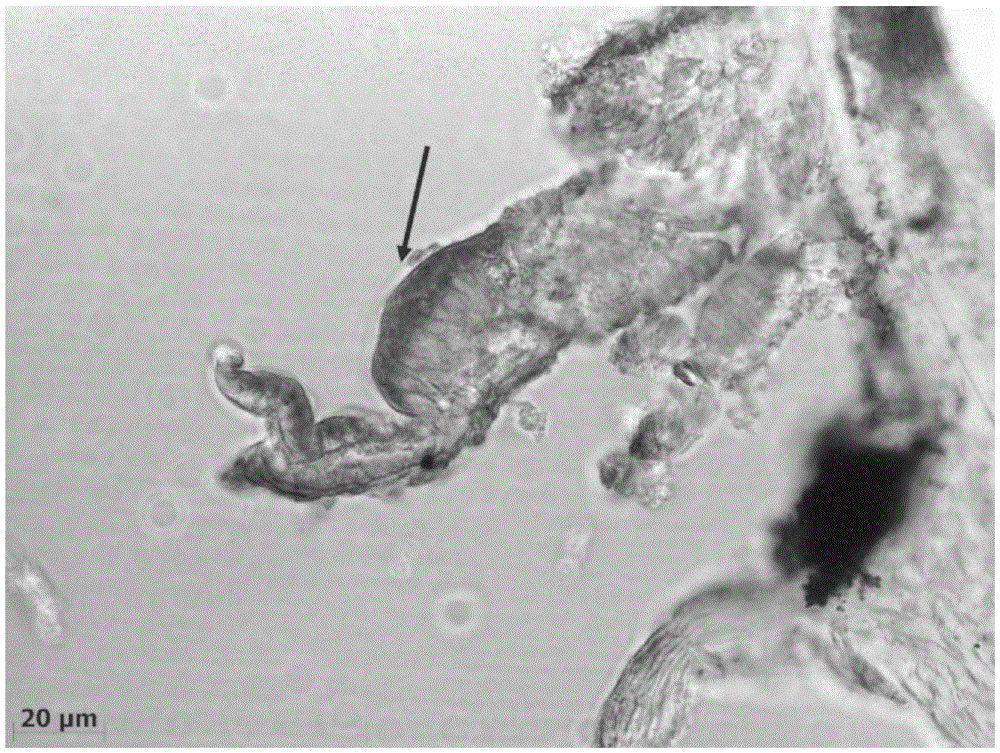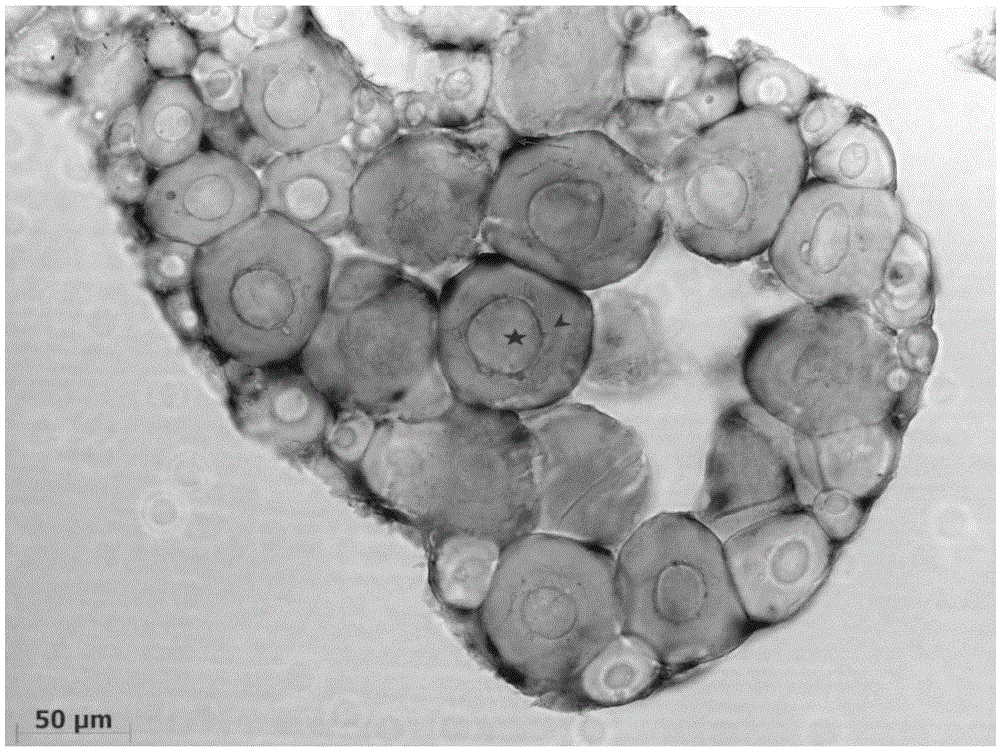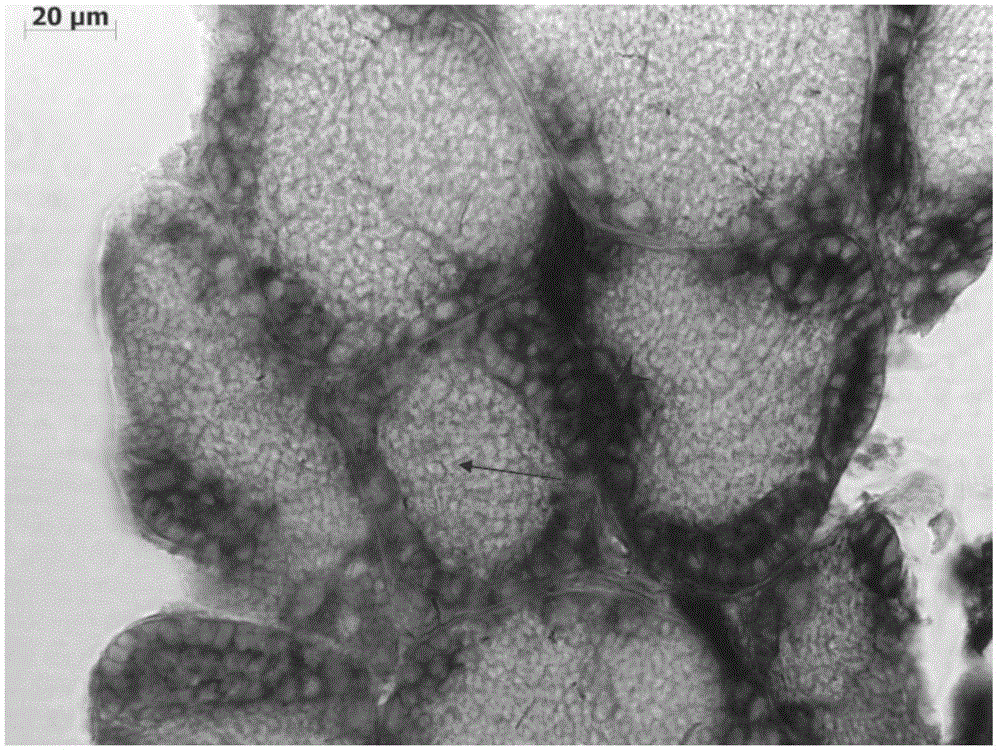Method of flounder juvenile gonad mRNA in-situ hybridization
A technology of in situ hybridization and RNA probe, which is applied in the field of mRNA in situ hybridization of juvenile gonads, and can solve the problems of difficult separation, small gonads, and difficult application.
- Summary
- Abstract
- Description
- Claims
- Application Information
AI Technical Summary
Problems solved by technology
Method used
Image
Examples
Embodiment 1
[0029] 1. Sampling and washing.
[0030] The sample is a juvenile fish whose full length is less than 60.0mm and gets its whole abdominal sample; the sample is washed with RNase-free 1×PBS buffer (1×PBS buffer composition is 136.89mMNaCl, 2.67mMKCl, 8.24mMNa 2 HPO 4 ; 1.76mMKH 2 PO 4 , configured by RNase-free water, pH7.4) for rinsing;
[0031] 2. Fixed. After washing, the above samples were placed in RNase-free centrifuge tubes, mixed with 4% PFA at a volume ratio of 1:10, then inverted and mixed, placed flat at 4°C, and fixed for 10 hours. The PFA was obtained by dissolving 4 g of PFA in 100 ml RNase-free 1×PBS buffer.
[0032] 3. Long-term preservation. The above-mentioned fixed-treated samples were rinsed twice with 100% methanol solution, then replaced in 4% PFA solution, and placed at -20°C for long-term storage.
[0033] 4. Dissection. The above-mentioned preserved samples after fixation were removed as much as possible for further processing to obtain in situ ...
Embodiment 2
[0061] 1. Sampling and washing.
[0062] The sample is a gonad sample directly stripped from a juvenile fish with a full length greater than 60.0mm, and the sample is washed with RNase-free 1×PBS buffer (1×PBS buffer composition is 136.89mMNaCl, 2.67mMKCl, 8.24mMNa 2 HPO 4 ; 1.76mMKH 2 PO 4 , configured by RNase-free water, pH7.4) for rinsing;
[0063] 2. Fixed. After washing, the above samples were placed in RNase-free centrifuge tubes, mixed with 4% PFA at a volume ratio of 1:10, then inverted and mixed, placed flat at 4°C, and fixed for 10 hours.
[0064] 3. Long-term preservation. The above-mentioned fixed-treated samples were rinsed twice with 100% methanol solution, then replaced in 4% PFA solution, and placed at -20°C for long-term storage.
[0065] 4. Dissection. The above-mentioned preserved samples after fixation were further processed (removal of the mesangium of the gonad samples, cutting the gonads into a size of about 5 mm) to obtain in situ hybridization ...
PUM
 Login to View More
Login to View More Abstract
Description
Claims
Application Information
 Login to View More
Login to View More - R&D
- Intellectual Property
- Life Sciences
- Materials
- Tech Scout
- Unparalleled Data Quality
- Higher Quality Content
- 60% Fewer Hallucinations
Browse by: Latest US Patents, China's latest patents, Technical Efficacy Thesaurus, Application Domain, Technology Topic, Popular Technical Reports.
© 2025 PatSnap. All rights reserved.Legal|Privacy policy|Modern Slavery Act Transparency Statement|Sitemap|About US| Contact US: help@patsnap.com



